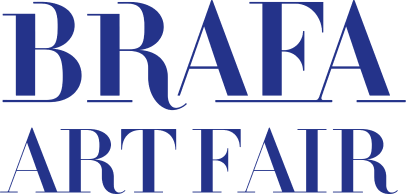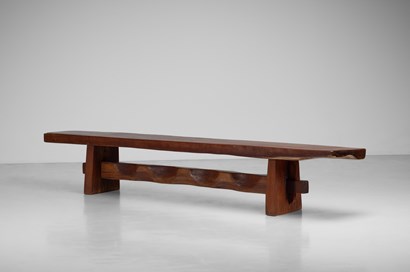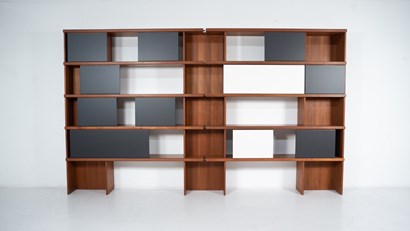This section will be available this Autumn.
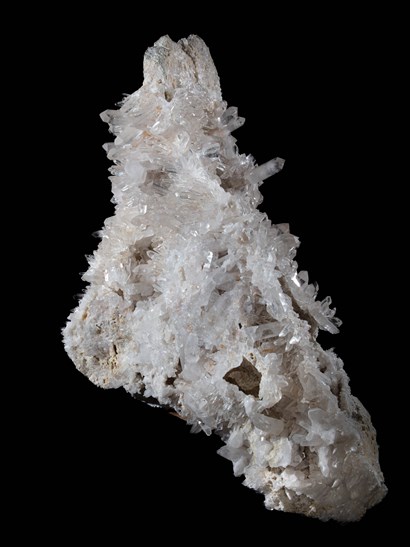
Stone Gallery
Quartz crystal cluster Weight: 350 kg 87 x 135 x 75 cm Origin: quarries of Mount Ida, Arkansas, USA, discovered in 1993 Provenance: Paul Membrini collection until 2023 Rock crystal is the crystallised, colourless variety of quartz, also known as clear quartz. All the crystals with their countless facets are 100% natural. With its transparent and colourless appearance, it is revered for its purity and clarity. This giant group of quartz crystals weighs approximately 350kg and is 87 x 135 x 75 cm. It displays remarkably perfect and water-clear crystals on all sides. Discovered in one of the famous crystal quarries of Mount Ida, Arkansas, USA, in 1993. The piece was once part of the Membrini Collection from Switzerland, a phenomenal museum-quality crystal collection, meticulously assembled over the years by Membrini Kristall, a firm based in Chur, Switzerland. Founder Paul Membrini was a renowned “strahler,” a professional crystal hunter who explored the Alps. Stone Gallery acquired the Membrini Collection in early 2023. Martin Garrix Stone Gallery proudly announces that the larger sibling of this piece, a great cluster weighing an impressive 4500 lbs, is now on display at the Naturalis Biodiversity Center in Leiden, in part thanks to Dutch DJ Martin Garrix.
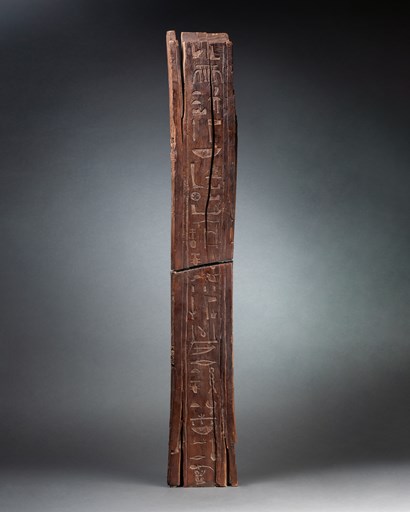
Desmet Fine Arts
Two fragments of a wooden sarcophagus corner post of the Priest Horudja re-united after 50 years Wood Egypt, late Dynastic period, 26th Dynasty, circa 664-525 BC H 92 x W 15 x D 5.5 cm Accompanied by Art Loss Register certificates: S00238635 & S00238636 Provenance: Fragment A: Chakib Slatine, Paris (acquired 1975); private collection, Paris (acquired 1977). Fragment B: Chakib Slatine, Paris (acquired 1975); private collection, Paris (acquired 1977); Ede Gallery, London (of which acquired in 2020)
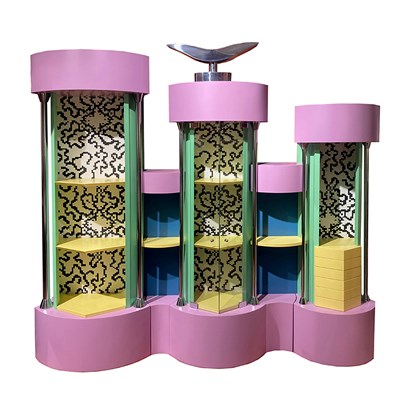
robertaebasta
Alessandro Mendini (Milan, 1931-2019) 'Libreria scultura' prototype of modular bookcase/display for Swatch, Italy 1994 Lacquered wood, coloured, laminated, chromed and satin steel H 214 x W 250 x D 40 cm Unique piece Certificate of authenticity by Mrs Elisa Mendini and Mrs Fulvia Mendini Provenance: private collection, Italy
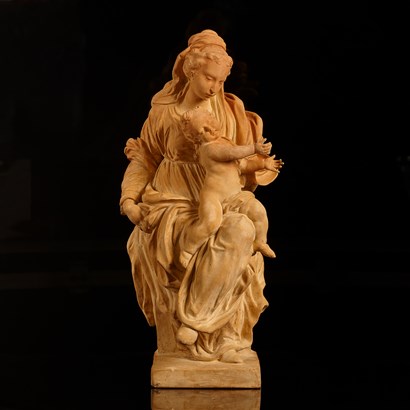
Floris van Wanroij Fine Art
rombout ‘pauli’ pauwels
Rombout ‘Pauli’ Pauwels (Mechelen circa 1625-1692 Ghent) The Virgin and Child Terracotta, sculpted on full round (contains restorations) H 52.5 x W 24 x D 23.5 cm Provenance: the Hulshoff Pol collection, Wassenaar, The Netherlands Literature: Neeffs, E. (1879), Histoire de la peinture et de la sculpture à Malines, Ghent, Vol. II, pp. 193-200; Nieuwdorp, H. (1977), De beeldhouwkunst in de eeuw van Rubens in de Zuidelijke Nederlanden en het prinsbisdom Luik, Brussels: KMKG, pp. 325-327 nrs. 294-298, p. 140, n° 103; Jacobs, A. & Vézilier, S. (2011), Fascination baroque: la sculpture baroque flamande dans les collections publiques françaises, Paris, pp. 116-121
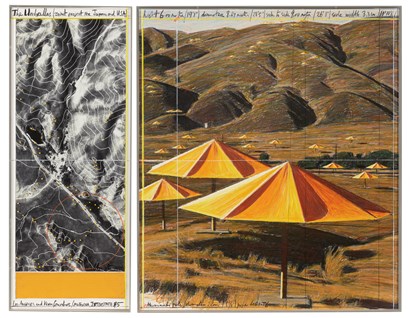
De Zutter Art Gallery
christo
Christo (Bulgaria 1935-2020 New York) and Jeanne-Claude (Casablanca 1935-2009 New York) The Umbrellas, 1990 Diptych Collage and mixed media on panel 78.2 x 67.2 cm and 78.2 x 31.2 cm Provenance: atelier of the artist; private collection Literature: S. Philippi, ed., Christo and Jeanne-Claude, The Umbrellas, Japan-USA, 1984-91, Cologne, 1998, pp. 694-695 (illustrated)
_MekhitarGarabedian_T638925902664298349.jpg?width=410&height=2000&qlt=90&scale=both&mode=max&format=jpeg)
N. Vrouyr
mekhitar garabedian
Mekhitar Garabedian (Syria, Aleppo 1977) I copied this in a hurry and wrote in large letters (carpet) Pile: wool and silk, warp and weft: cotton 120 x 120 cm Provenance: handmade in Nepal For the design of this carpet, and the edges of the image in particular, Mekhitar Garabedian has reinterpreted Armenian medieval miniatures. The decorative patterns were the monks’ preferred place to improvise and deviate from the norm. By appropriating various visual and textual sources, Garabedian explores the fragility of heritage. Biography Deploying a variety of media such as drawing, video, photography and installation, many of Mekhitar Garabedian’s works draw from his experience as an immigrant and play on the humour and poetic qualities he finds between languages, cultures and histories. Just as his personal diasporic history is layered, his work echoes with a multiplicity of references to literature, music, philosophy and visual arts. Mekhitar Garabedian (°1977) was born in Aleppo and lives and works in Antwerp. In 2022, he was commissioned by Middelheimmuseum/Kunst in de Stad to create a public sculpture in the Antwerp Stadspark. Previously he had solo exhibitions at BOZAR in Brussels, S.M.A.K. in Ghent, Beursschouwburg in Brussels, BE-Part in Waregem and KIOSK in Ghent. In 2015 he was invited to present several works at the Venice Biennale in the Armenian pavilion, which was awarded with the Golden Lion. Garabedian participated in group exhibitions that were held at the New Museum in New York, Hamburger Kunsthalle, WIELS in Brussels, 5th Thessaloniki Biennial, Marta Herford, Villa Empain in Brussels, Gulbenkian Museum in Lisbon, Argos in Brussels, Haifa Biennial, BAM in Mons, M HKA in Antwerp, Drawing Room in London, Museum M in Leuven and Kunsthaus in Dresden, amongst many others.

Costermans
Jacques Dubois (Pontoise 1694-1763 Paris) Slant-front desk in Chinese lacquer, Louis XV period Chinese lacquer and bronze-guilded mounts H 93 x W 85 x D 54.5 cm Stamped Jacques Dubois, Parisian cabinetmaker, received master in 1742 Literature: P. Kjellberg, Le Mobilier Français du XVIIIe siècle, Paris, 1989, ill. p. 269, fig. G
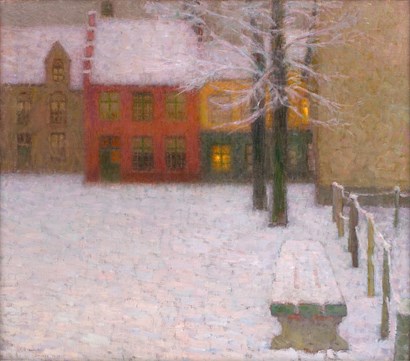
Willow Gallery
henri le sidaner
la neige
Henri Le Sidaner (Mauritius, Port Louis 1862-1939 Versailles) La Neige, 1899 Oil on canvas 66 x 75 cm Signed, dated and inscribed ‘Le Sidaner Bruges 1899’ Provenance: James Fulton, Paisley; Paisley Art Institute, Paisley, a bequest from the above in 1933 Literature: W. Philip Mayes, Illustrated Catalogue of Paintings, Drawings, Sculpture in the Collections of Paisley Corporation and Paisley Art Institute, Paisley, 1948, n° A189au., p. 49 (titled 'The Red House'); Y. Farinaux-le Sidaner, Le Sidaner: L'oeuvre peint et gravé, Milan, 1989, ill. p. 70, n° 86

d'Arschot & Cie
Perfume bottle and case Germany, circa 1620 Anonymous silversmith Chased, engraved, and partially gilded silver. Case in boiled leather. H 9 cm – Weight: 58 g This elegant perfume bottle stands out for the exceptional preservation of its original boiled leather case, a testament to the care taken in protecting and transporting such precious objects in the 17th century. The bottle features a finely engraved vegetal motif enlivened with small exotic birds, typical of the work of silversmiths from southern Germany during the first third of the century. At a time when the distillation of essences was still in its infancy, such bottles accompanied the daily life of the elite, allowing the frequent application of fleeting perfumes. This model, fitted with a screw cap ensuring perfect sealing, illustrates both the practical function and the symbolic value of perfume as a marker of social distinction.
_ChristoandJeanne-Claude_T638932180913780762.jpg?width=410&height=2000&qlt=90&scale=both&mode=max&format=jpeg)
Edouard Simoens Gallery
christo and jeanne-claude
Christo (Bulgaria 1935-2020 New York) and Jeanne-Claude (Casablanca 1935-2009 New York) The Pont Neuf Wrapped (Project for Paris), 1985 Pencil, charcoal, pastel, wax crayon, and technical data 144 x 165 cm (overall) Provenance: Wolfgang Volz collection; private collection Literature: Christo and Jeanne-Claude: Water Projects, Silvana 2016, p. 167
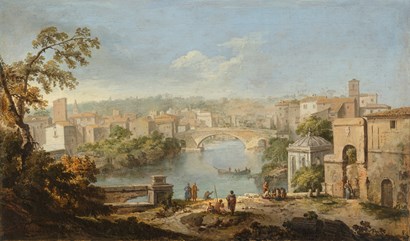
Galerie Alexis Bordes
paolo anesi
Paolo Anesi (Rome, 1697-1773) View of the Ponte Cestio from the Tiber island Oil on canvas 28 x 48 cm Provenance: anonymous sale, Paris, Hôtel Drouot (Maître Baudoin), May 31st, 1919, lot n° 98 (Vanvitelli, View of a city-houses rise on both banks of a river crossed by a stone bridge. In the foreground, on the ground to the right, a fragment of a fluted column and a broken capital); private collection, France Literature: Olivier Michel, Biographical Research on Paolo Anesi, in Publications de l'École Française de Rome, Vivre à peindre à Rome au XVIIIe siècle, vol. 217, 1996, pp. 319–334 Praised during his lifetime as one of the most brilliant vedute painters of the eighteenth century in Italy, Paolo Antonio Anesi nevertheless remains a figure whose life and work are still little studied. Active in Rome, Anesi never left his native city. The panoramas offered by its hills provided him with a multitude of striking viewpoints. The Aventine, one of Rome’s seven hills, appears to have been a favourite subject. To produce his painting, Anesi positioned himself on the Isola Tiberina, a small island in the middle of the Tiber, connected to the left bank by the Ponte Cestio and to the right bank by the Ponte Fabricio.
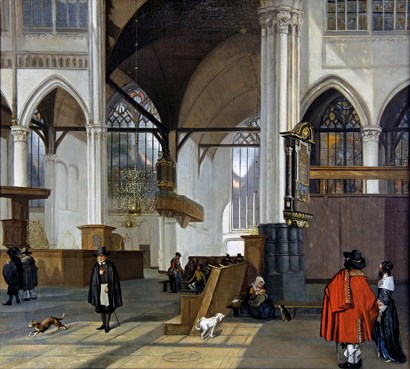
Douwes Fine Art b.v.
emanuel de witte
Emanuel de Witte (The Netherlands, Alkmaar circa 1616-1691/2 Amsterdam) Interior of the Oude Kerk in Amsterdam, the transept seen from the South Oil on canvas 64 x 71.5 cm Signed 'E. De. Witte' (c.r.) Provenance: Abraham Dijkman, Amsterdam; his deceased sale, Amsterdam, de Bosch/ Yver, 17-18 July 1794, lot 47; sale, London, Foster, 25 March 1931 (as 'unknown'); acquired at the above sale by Asscher & Welker, London; with D. Katz, Dieren; Dr. A. Welker, London, 1935; with J.D. Klaasen Jr., Rotterdam; P.M. Kerdel, Scheveningen, 1963; with Hans Cramer, The Hague by 1990; acquired by a Dutch Foundation, in 1998 Literature: Noach, 'Het Material tot de Geschiedenis der Oude kerk te Amsterdam', Amsterdam 1937, p. 81; E. Trautscholdt, in U. Thieme and F. Becker, 'Algemeines Lexikon der Bildenden Künstler' Vol. 36, Leipzig, 1947, p. 125; I. Manke, 'Emanuel de Witte', Amsterdam, 1963, p. 92, n° 62 with ill. fig. 31; F. Duparc et al., 'Masterpieces of the Dutch Golden Age', exhibition catalogue, Atlanta, 1985, p. 132-3, n° 60 with ill.; H.R. Leppien, 'In Blickfeld: Holländische Kirchenbilder', exhibition catalogue, Hamburg, 1995, pp. 56-7, 66-8, n° 20 Exhibitions: Rotterdam, Museum Boymans Van Beuningen, 'Vermeer, oorsprong en invloed Fabritius, de Hooch, de Witte, 9 July-9 October 1935, n° 116; Rotterdam, Museum Boymans Van Beuningen, Tentoonstelling van schilderijen, beeldhouwwerken en teekeningen uit particuliere verzamelingen in Nederland: onder auspiciën van de 'Stichting Museum Boymans' , December 1939-January 1940, n° 59; Atlanta, High Museum of Art, Masterpieces of the Dutch Golden Age, 24 September-10 November 1985, n° 60, p. 132-3; Hamburg, Kunsthalle, In Blickfeld: Holländische Kirchenbilder, 1995/96, n° 20
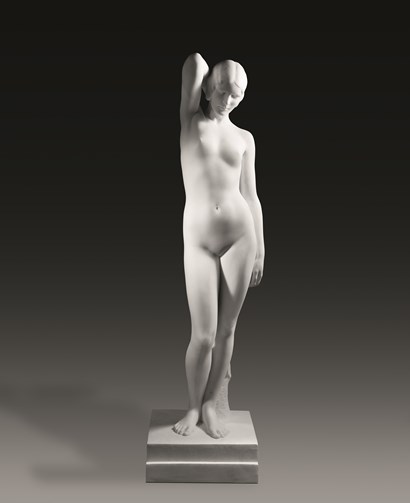
Galerie Nicolas Bourriaud
marcelle delcour - guinard
Marcelle Delcour-Guinard (Switzerland, Meyrin 1896-1978 France) Bather, 1931 Marble sculpture H 172 x W 45.5 x D 46 cm Signed ‘M Delcour-Guinard’ and dated 1931 Unique piece Provenance: the artist's family collection Exhibition: Salon des Artistes Français, 1932, Baigneuse, statue de marbre, n° 3675 Born in Cointrain (Canton of Geneva), Marcelle Delcour trained at the Regional School of Fine Arts in Rennes and studied under the sculptors Laurent Marqueste (1848–1920) and Victor Ségoffin (1867–1925), the head of the sculpture studio for female students at the École nationale supérieure des beaux-arts in Paris. In 1920, she married the painter Robert Raoul André Guinard (1896–1989), with whom she spent two years in Morocco in 1934. Upon returning to France in 1936, the couple settled in a small village called Crécey, in the commune of Saint-Pair-sur-Mer: he painted, she sculpted. Benefiting from the post–Second World War reconstruction projects, she received numerous commissions from Canon Pinel to restore works of art preserved in the churches of the Manche region. Anne Delcour-Guinard exhibited regularly at the Salon des Artistes Français from 1924 to 1932. In 1924, the committee of the Association des artistes peintres, sculpteurs, architectes, graveurs et dessinateurs (Fondation Taylor) awarded her the Prix Galimard-Jaubert on May 27. In 1925, she received an honourable mention, and in 1932, a bronze medal for La Baigneuse, a marble sculpture. The work was then displayed in a place of honour at the centre of the nave of the Grand Palais. The sculpture is indeed remarkable for its life-size proportions and its distinctive 1930s style, which, in the spirit of Art Deco, celebrates the female form - elongated, elegant, and liberated. She is embodied here as the garçonne: short-haired, athletic, and modern, asserting her nudity without false modesty, revealed through the graceful gesture of her folded arm and offered to the viewer’s gaze.
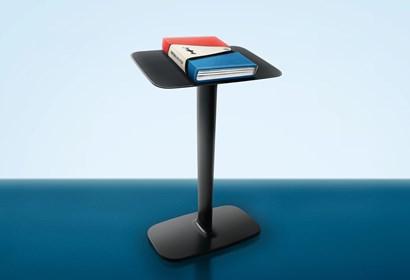
TASCHEN
marc newson
Marc Newson (Australia, Sydney 1963) America’s Cup This limited edition unfurls the story of America’s Cup and celebrates its skippers, owners, defenders, and challengers. Packed with previously untold tales and unseen photographs, it features a case designed by Marc Newson, crafted from cotton sailcloth, and a custom-made closure by Louis Vuitton, the official partner of the 37th America's Cup. Copies 1-175 come with a numbered carbon fiber bookstand also designed by Newson.
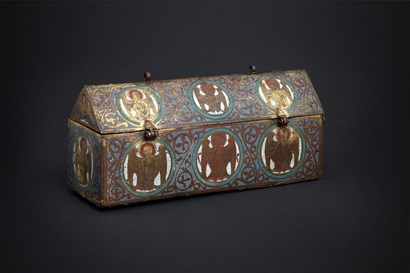
Art et Patrimoine - Laurence Lenne
Reliquary 'in the form of a sarcophagus with a hinged roof' Limoges, mid-13th century Gilt copper plates, champlevé enamels H 11.8 x W 27.5 x D 9.5 cm Literature: Inventaire général des monuments et des richesses artistiques de la France. Emaux limousins du Moyen Age. Correze/Creuse/Haute-Vienne, under the direction of Paul-Édouard Robinne, Éditions de l’Inventaire, Images du Patrimoine, 1995; Emaux de Limoges XIIè-XIXè siècle, under the direction of Jacques Toussaint, Museum of Ancient Arts of Namur, 1996; Valérie & Thomas Becket, De l'influence des princes Plantagenêt dans l'Oeuvre de Limoges, Municipal Museum of the Bishop’s Palace-Museum of Enamel, Limoges, 1999 A reliquary, without a wooden core, taking the shape of a sarcophagus with a hinged roof. It is made of gilt copper plates and decorated with champlevé enamels depicting sixteen half-length angels emerging from clouds against a white enamel background. The decoration consists of two superimposed registers of three engraved gilt angels set within round medallions. The medallions stand out against a blue enamel ground adorned with gilded Gothic foliage and interlace patterns. This reliquary belongs to a series of standardised reliquaries known from the Limousin region, all dating from the 13th century. Its dimensions make it one of the largest examples of this 'sarcophagus with movable roof' type. It is closely related to the exceptional large reliquary of Saint-Yrieix-la-Perche, classified as part of the Treasure of the French Historic Monuments.
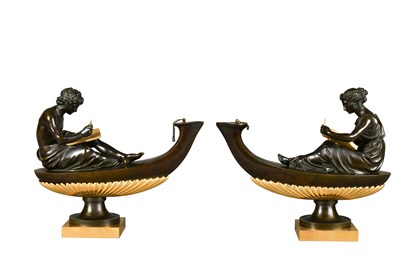
Gallery de Potter d’Indoye
Pair of oil lamps Ormoulu and patinated bronze Embossed gilt bronze and patinated bronze, representing the allegory of Philosophy and Study, each seated on an antique oil lamp, with an edge in gadroon motif, on a square footed base France, Consulat period, circa 1800 H 31 x W 36 cm Based on a model by Louis-Simon Boizot Comparative literature: H. Ottomeyer et P. Pröschel et al., Vergoldete Bronzen, Munich, 1986, vol. I, p. 294, fig. 4.17.1. I, p. 294, fig. 4.17.1. This pair of oil lamps is clearly designed in a neoclassical style, and, more specifically, in the 'Etruscan' style which came into vogue in the 1780s. This style draws its inspiration from antique forms rediscovered in archaeological digs, in particular those at Pompeii and Herculaneum, and manifested in the decorative arts by simple lines and ornamentation inspired by Antiquity. The allegorical figures of Philosophy and Study, which decorate these lamps, are taken from models created by Louis-Simon Boizot (1743-1809), then sculptor for the King. Boizot designed them for the first time in 1780 for a lamp in the antique style. He sold the model to the Sèvres factory, which then reproduced it in biscuit porcelain until 1786. These two figures were also used in the famous clock model, 'To Study and to Philosophy', created based on a drawing by François Rémond for the decorative arts merchant Dominique Daguerre. It is important to note that Pierre-Philippe Thomire (1751–1843), a reputed bronze worker, collaborated with Boizot in Sèvres beginning in 1783, the date when he succeeded Jean-Claude Thomas Duplessis (1730-1783) as the official bronze worker for the factory. The involvement of Thomire in the production of bronzes of this type is widely acknowledged. Comparable oil lamps include: - a pair kept at the J. Paul Getty Museum in Los Angeles (inv. 88.SB.113.1 et 88.SB.113.2), attributed to Thomire; - another from the former collection of Sir Robert Abdy, sold at Christie's London on June 9th, 1994, lot 65,; - a pair offered for sale at Christie's London on December 13th, 2001, lot 430. - finally, a pair presented in the Madame Simone Steinitz collection at Christie's in Paris on June 19th, 2025, Paris lot 126. A drawing attributed to Thomire, kept at the Museum of Decorative Arts in Paris, depicts a very similar lamp placed to the right of a fireplace (cf. J. Bourne et V. Brett, L’art du luminaire, Paris, 1992, p. 156, fig. 530). In addition, two sketches found in an album of drawings analysed by P. Rosenberg and B. Peronnet (Revue de l’Art, n° 142, 2003-2004) bear witness to the distribution and success of these models. They perfectly illustrate the taste for Antiquity, which dominated French decorative arts in the late eighteenth century.

Collectors Gallery
Arman (Nice 1928-2005 New York) Capricorn brooch in gold Zodiac collection, 1994 Certificate of authenticity and copy of the artist’s original drawing on the letterhead of the Hôtel Lutetia, where the artist resided and designed the models for this collection Provenance: Galerie Pierre-Alain Challier, successor to Editions Artcurial

